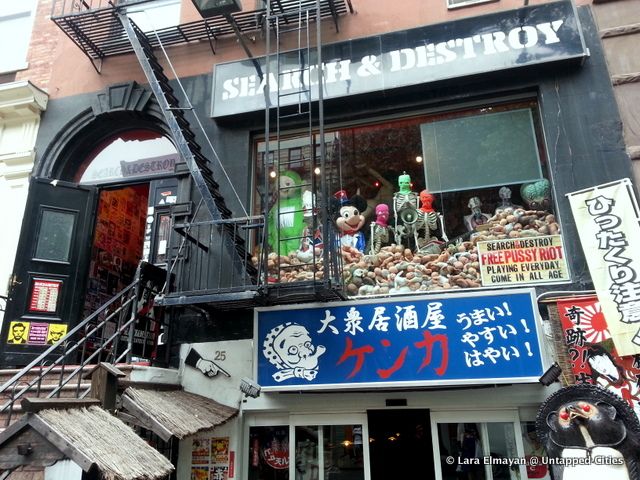Exploring New York’s Industrial Past in "Cathedrals of Industry"
Join photographer Michael L. Horowitz for a journey through 50 years of photographs!


Depending on how you look at it, St. Mark’s Place in the East Village is either thriving as a last stronghold or being lost to the gentrification surrounding the historically counterculture street. The gritty East Village once attracted members of New York’s underbelly, playing host to artists and mafia members alike, and St. Mark’s was at the heart of it.
The small street, spanning just 3 blocks, runs between Cooper Square (or 3rd Avenue) to the West and Avenue A to the East, in place of 8th Street. The street is named after the second oldest church in NYC, St. Mark’s Church in the Bowery which is located on the Bowery and 10th Street. The spot on which the church sits has been the oldest site of continuous worship in NYC, with the church originally built in 1799 after the plot of land was sold for a mere $1 by Peter Stuyvesant.
With the development of the city’s grid system in the mid 19th century, St. Marks along with Lafayette “developed into some of the city’s most fashionable addresses,” according to a Landmark Preservation report. As the 1840s approached, those who owned the land started to sell individual plots, primarily to speculators, who purchased large plots and “built rowhouses.” They sold these off to middle class families in the latter portion of the 19th century. St. Mark’s carries the distinction of having three of the oldest Federal style buildings in America.
With the vast influx of German immigrants in this period, the population began to outgrow their original settlement area between Canal to Rivington. They eventually moved into the East Village, specifically Third Avenue to the East River, south of 18th Street and north of Division. The area became known as Kleindeutschland, or little Germany, and was home to the third largest concentration of German speakers in the world, according to the preservation report. At the center of this community was St. Marks Place.

Shops on St. Marks Place today, including Search and Destroy, a punk t-shirt shop
Perhaps the epitome of the culture of St. Marks Place–and one that helps to shed light on the transformation from residential street in an immigrant community to its current state–was the address of 19-23 on the street. Originally built in 1831 as townhouses owned by middle class families, the houses were quickly combined and converted to a German music club, called the Arion Society. The name was changed to the Arlington Society years later. This club is perhaps the reason for the streets development into its current state–as the club grew in popularity and the area became a nightlife destination for the area, places began to grow to cater to club goers.
The location also happened to have played host to a series of historical happenings on the block, the first notable one of which was a 1914 gang shootout–indeed a sign of the neighborhoods past as a hub for organized crime. The fight took place between Benny Fein gang, a Jewish American gang, and the Jack Sirocco gang, an Italian American group.
As the psychedelic movement swept the scene, the space was transformed into one of the city’s hottest nightclubs, called Electric Circus. The stage played host to acts from Jimi Hendrix to the Velvet Underground, with the latter performing in association to Andy Warhol’s show, Incredible Plastic Explodable, held from 1966 to 1967.
Today there still exists a small stone seal on the #12 building that states “Einigkeit macht stark.” This means “Unity is Strength” and is located on the building that housed the former German-American Shooting Society. The structure was built in 1888-89 and designated as a landmark in 2001. This is a clear reminder of the areas past as Kleindeutschland, or Little Germany and still remains intact to this day.
On the corner of Third Avenue and St. Marks resides the St. Marks Hotel, with a history riddled with drug use in the entranceway and as a hotbed destination for prostitution. Though not so
It is one of the few spots on the street that has not changed since its heyday in the 1960s.
Though part of the past site of the Electric Circus has become a Chipotle, and many of the shops have indeed changed hands and the goods they sell have changed, the grimy feel of St. Marks lives on. From the punk clothing stores to the continuing existence St. Marks Hotel, the spirit of the street still refuses to die.
Stay tuned for the next installments of the History of Streets on St. Mark’s Place, as we continue east.
When you’re visiting the street, do also check out the Museum of the American Gangster at 80 St. Mark’s Place, a former Prohibition speakeasy that’s now a theater, bar and museum. It has a wild history, including the embezzlement of $2 million dollars and the discovery of secret escape routes. You can get a tour and Prohibition cocktail with us here on May 18th.
Get in touch with the author @spencercnyc
Subscribe to our newsletter